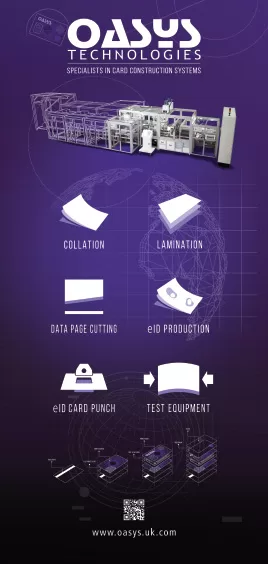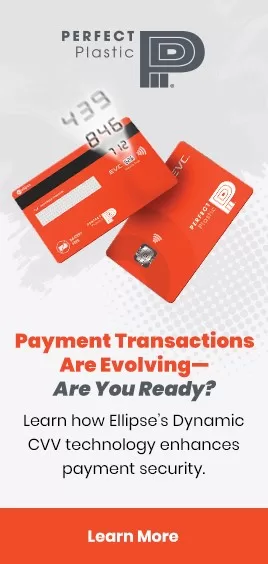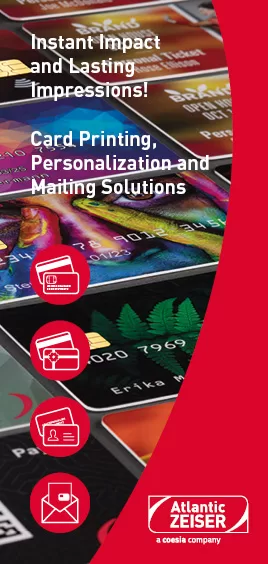
by Jennifer Kohlhepp | CM Magazine Featured
How to Capitalize on Rising Debit Card Popularity
 New trends and use cases driven by the pandemic are opening new opportunities for the card industry
New trends and use cases driven by the pandemic are opening new opportunities for the card industry
By Dan Oswald, CEO, Arroweye Solutions
The pandemic fueled the increased use and popularity of general-purpose cards such as debit cards, among both consumers and businesses to enable an easier funds disbursement model. Capitalizing on this renewed and increased interest in debit cards over the long-term requires a strong understanding of the timely cardholder use cases, a nimble approach to card marketing and the ability to stand out with target cardholder segments.
Here’s a rundown on the latest trends card industry stakeholders can capitalize on:
Trend: Debit Cards as Vehicles for Pandemic Relief Funds and Connection to the Digital Economy
Early on in the pandemic, prepaid debit cards became the go-to solution for distribution of Economic Impact Payments and other forms of aid—delivering quick, easy access to funds to millions of people across the country. The ability to print and distribute cards in record time was essential because it gave so many people access to critical payment methods at a time when dealing with checks and cash was a non-starter.
Those who previously operated on a cash-only basis, cashed the occasional check pre-pandemic or steered clear of cash for safety concerns, were locked out of digital and mobile payment options, many of which became the only option to hail a ride, order food or buy groceries. But receiving aid via debit cards has driven adoption of new card-based payments and connection to the digital economy.
Visa’s chief financial officer recently told MarketWatch that “…Debit is clearly the gateway to cash digitization,” and the outlet notes that “people often move to debit first when they shift away from cash…and develop digital payments habits.” As organizations continue to leverage debit cards as vehicles for distributing aid or relief funds, the migration to cashless payments will continue to grow.
Long-term opportunity: As people continue to be cash-averse and more are comfortable turning to debit cards for similar spending features or access to digital shopping channels, the door is wide open for banks and fintechs to offer more value through these card products. Fast-movers can capitalize on this opportunity by putting programs in the market with benefits that appeal to the specific needs of these new adopters, such as easy ways to load funds or get cash, connection to digital shopping channels, better spending and budgeting visibility, savings programs or virtually any funds disbursement need that may come about. Debit cards and the networks they use are ubiquitous and a proven commerce enabling capability with high levels of existing use and channel trust already built in.
Trend: Rampant E-Commerce Adoption
As countries continue to navigate new ways of spending, even people who were already using card-based accounts have transformed the way they handle and spend their money—and e-commerce has exploded.
Adoption of mobile payments methods has dramatically accelerated. In-store mobile payments use grew 29% last year and digital payment adoption has exploded years faster than expected; many consumers also loaded a card into a mobile wallet for the very first time. Yet physical debit cards are the backbone of many of these payment technologies and continue to work in tandem with digital accounts, especially when point-of-sale (POS) systems aren’t ready for mobile payments or go offline. While digital payment adoption will continue to rise, physical cards will be increasingly necessary to fuel this growth while providing easy-to-use options for disbursement and payment.
Long-term opportunity: Both financial brands and non-financial businesses are capitalizing on this trend by offering new debit-based payment accounts or apps that enable people’s increasingly mobile lifestyles—and reward them for their purchases to create ongoing engagement. They can even test new offers and segment their go-to-market strategies if they have total flexibility and control over key launch elements like card marketing and design, just-in-time card production and distribution.
The payoff is big: card marketing experts know that personalized card offers dramatically improve response rates and can attract new high-value segments to capture more market share. The real-world advantages of issuing, distributing and enabling the physical card blended with virtual card deployment and mobile wallet use is clearly becoming necessary to compete in today’s market. The reality is, all three beautifully coexist to enable the ultimate in flexibility and seamless consumer choice and channel usage.
Trend: People are Using More Accounts for Earning, Spending and Saving
Studies show that people keep their funds in multiple accounts and are using those accounts in more ways than ever. Whether it’s a debit card affiliated with a traditional bank account, a mobile or digital banking account or even a peer-to-peer app, more consumers are using debit accounts to earn or “save” funds, regardless of the ability to earn interest.
The pandemic also drove many businesses to pay people faster, and fewer payroll checks are being issued in paper form as a result. Direct deposit to debit-based card accounts gives workers faster access to wages and many workers are using individual card accounts to segment earnings from various sources.
At the same time, younger generations continue to be averse to incurring more debt, from credit cards or other sources, so flexible, low-fee debit card accounts fit the bill here too.
Long-term opportunity: Consumers across all generations, income brackets and lifestyles are embracing the use of multiple debit-card based accounts, driving growth across the market while challenging the traditional boundaries in channel and form factors for executing everyday financial needs. But growing markets are crowded, and card programs must stand for something to stand out. Card programs must leverage the ability to target specific buyer segments, customize card marketing dynamically while plugging into a partner who enables the speed of just-in-time production that is both cost effective and scalable.
Without question, debit cards have driven economic growth during the pandemic, and this trajectory isn’t slowing down. Fintechs and other financial institutions will benefit as people have positive debit card interactions from brands they trust. Whether it’s to connect them to the digital economy, send and receive funds in a timely efficient way or replace cash payment functionality, debit cards are versatile solutions. Embracing these use cases will drive new revenue opportunities and create a sustainable path toward more customer acquisition opportunities.
About the Author: Dan Oswald is a seasoned leader with 35 years of experience driving growth and operational excellence. For more than three decades, Oswald has navigated the ever-changing financial services, fintech and payments industries—helping teams to implement and successfully execute strategic product, operational and business development plans. Prior to joining Arroweye, he was the vice president of business development for Deluxe Corporations Payment Processing Outsourcing Division where he and his team transformed and built the company’s payment outsourcing division into the most respected payment processing service bureau in North America. Prior to his role at Deluxe, Oswald spent 29 years with First Data Corporation where he held many significant senior-leadership positions during his tenure, including the responsibility for the REMITCO payments division as senior vice president, senior vice president in the company’s output services division responsible for operating strategy and vice president and general manager overseeing one of First Data’s largest client relationships.






